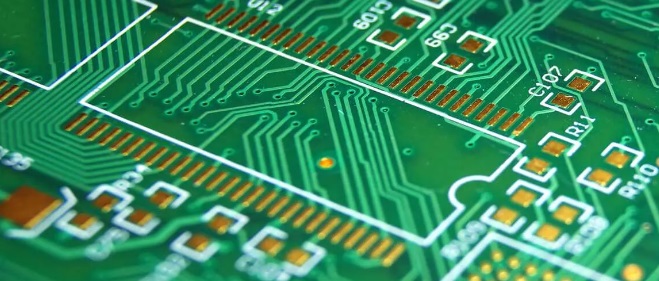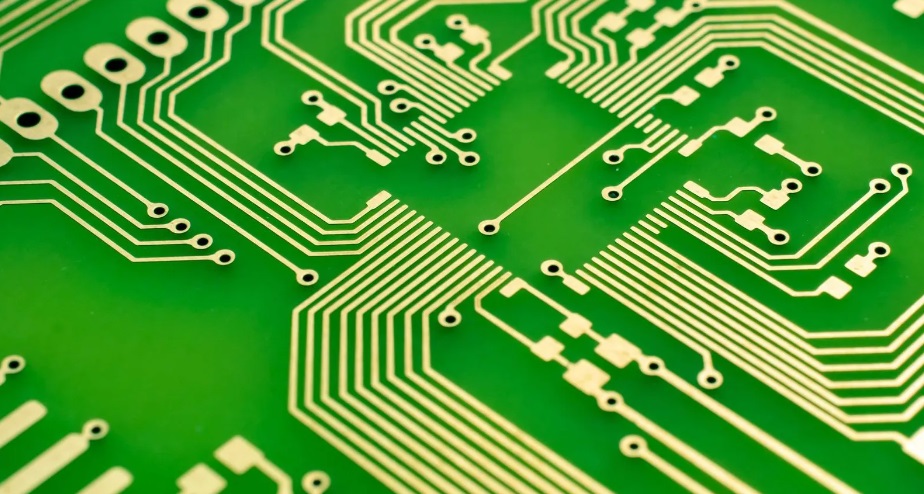The FR-4 CTE is different in the z-axis direction (perpendicular to the plane of the board) than in the x-y direction. It expands in the z-direction as the temperature rises. When the temperature is below the glass transition temperature Tg, the material is in the glass state, at which the thermal expansion coefficient (CTE) is a1, and above the glass transition temperature, it is in the colloidal state, with a thermal expansion coefficient (CTE) of a2, which is usually greater than a1 (about 3 times a1). For example, at temperatures below Tg, the CTE of glass fiber epoxy materials is also different in the x-axis and y-axis directions, with a difference of about 1~5PPM/℃, and about 20ppm/℃ in the z-direction. This difference is very important for improving the life of solder joints when the CTE of large-sized surface mount devices matches the substrate.
An important factor in the life of CTE-mounted PWA through-holes and microvias is that their aspect ratio (substrate thickness to hole diameter) is usually larger than the aspect ratio of the printed board that has just completed the through-hole processing. During electrical processes such as SMT reflow, component removal, resoldering, repair processes, printed circuit board manufacturing, solder ball wetting, hot air leveling and wave soldering, if the CTE value in the z direction is large, it will cause excessive PTH tensile stress.Therefore, the selection of printed circuit board substrates should first consider whether the coefficient of thermal expansion (CTE) of the material and the CTE of the components installed match. If it does not match, compensation measures should be taken.

fr 4 cte
CTE is a term we often use in printed circuit boards. But how many of us really know what FR-4 CTE is and how CTE begins to affect the circuit board?
CTE refers to the coefficient of thermal expansion. It describes a percentage of expansion when a PCB is heated or cooled. Every material in the world expands or contracts with changes in temperature. For example, your house is actually a few inches larger in the summer than in the winter.
Several materials are anti-growth, that is, they shrink when the temperature rises. But most of them have a small expansion when heated. The expansion is described in parts per million per degree Celsius. (ppm/C).
A PCB expands 14 per million lateral or longitudinal inches. This means that if a PCB is 1 million inches long, it expands 14 inches for every degree of temperature increase.
A typical FR-4 laminate has a CTE of 14 to 17 ppm/C. That's fine until we consider that the large silicon chips we solder to the PCB have a CTE of 6 ppm/C. The expansion rate difference is enough that - especially on larger BGA packages - when the PCB and chip heat up, the PCB will expand more than the chip package, causing the solder joints to pop off the chip.
So, we've discussed CTE in terms of PCBs, and manufacturers often use materials with low CTE. But how does CTE affect boards and the way we design and manufacture them?
When selecting laminates, we focus on specification letters: Tg, Dk, and DF, to name a few. All are important and affect each other. When we select laminates for low CTE, we find that all FR-4 types have similar CTE values, and most are too high (14 ppm/C) to be used on large silicon packages. This means we need to look at a different approach to controlling CTE by designing joints for metal, Kevlar, and Aramid cores.
These three low CTE materials are often used on FR-4 outer layers to create low CTE boards. Metal cores are made of copper-invar-copper (CIC) and copper-molybdenum-copper (CMC) and are typically 6 mil thick. The copper on the outer metal allows us to laminate on top of regular FR-4 prepreg and core.

fr 4 cte
The two most widely used metal cores are CIC and CMC, with CTE values of 8ppm/C and 6ppm/C, respectively. The metal core is used to anchor the FR-4 outer layers, with overall CTE values of 12ppm/C and 9ppm/C, respectively.
Similarly, we can use Kevlar Thermount or an Aramid laminate as the core material; their low CTE values are 7 to 8ppm/C, and when used with standard FR-4 outer layers the CTE is 12ppm/C. In multilayer production, the low CTE laminate core replaces the typical FR-4 core. Interestingly, the CTE of the actual Kevlar fibers has a negative coefficient of thermal expansion, and the epoxy used to bond them together produces a positive coefficient of thermal expansion.
Using low CTE lamination, the most expensive is the metal core, because Kevlar and Aramid fiber lamination. In the past, Arlon Kevlar Thermount was difficult to obtain, but new production has increased its production. All low CTE cores are difficult to drill and produce, but this is the only way to achieve the 6-9 CTE required for large silicon packages.
In addition to controlling FR-4 CTE, metal core PCBs can also be used to improve high-power thermal conversion. Remember that metal expansion requires much greater capacity than FR-4 layers; metal core controls CTE and can change more FR-4 layers than Kevlar.